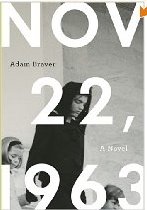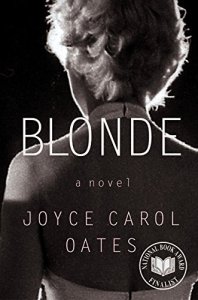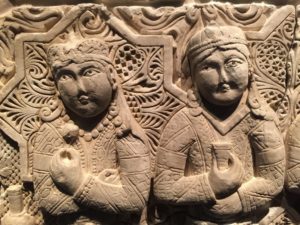
by Sandra Gulland | Nov 2, 2011 | Adventures of a Writing Life, On Plot, Recommended Books, Movies, Podcasts, etc., The Shadow Queen |
Ever since we returned to our winter home in San Miguel de Allende (Mexico), I’ve been working like crazy, getting ready for the sprint-revision of The Next Novel, which I’ve promised to send to my agent at the end of the month. (It was last due in May!)
I’ve recovered from the 4th draft conversion from 3rd person to 1st. That seems easy in comparison to the challenge now, which is figuring out an emerging important character and what happens to him. His story has evolved into a fairly important subplot (at draft 5!).
To help figure it out, I’ve laid out all the scenes on the big dining room table, puzzling over the flow of the story. (More than once, I groaned over the difficulty of writing a fact-based biographical novel.)
I’ve laid the cards out using the filmscript-writing structure proposed in Blake Snyder’s Save the Cat — a short, punchy and tad corny how-to book that offers quite a lot of helpful plot wisdom. (Scriptwriting and novel writing are two different beasts, but there can be fruitful cross-pollination. More on that later.)
But I shouldn’t be here, on-line — I should be figuring out The Story — but I got side-swiped this morning by the discovery that the opening line of The Next Novel made a shortlist of opening lines by agent Betsy Lerner in her irresistibly caustic blog: The Forest for the Trees.
The line?
Winter was coming — I could smell it.
Ironically, I changed that line yesterday to:
It was the season of turning, everything golden.
What do you think?
by Sandra Gulland | Aug 6, 2010 | Adventures of a Writing Life |
.
.
The problem with writing fact-based fiction is … well … facts. They can really mess up a good story.
I’d read that the Mortemarts, the family of Athénaïs, Madame de Montespan, lived on rue de Rosiers.
Perfect: rue des Rosiers is not far from where Claude des Oeillets, my main character, lived when she first came to Paris. It worked into the story perfectly. Their lives do become entwined; nobody knows how their relationship began, but as a novelist it helped that they were walking distance from one another.
Twice I scouted rue de Rosiers on research trips to Paris. I took many photos, but more than that: I walked the cobbles, dreaming.
Unfortunately, I didn’t read the fine print at the back of one of the texts. Hôtel Mortemart was on another rue de Rosiers, a street that is now named rue Saint-Guillaume … far, far from my heroine Claude.
And that’s not entirely certain, either. Some accounts claim that Hôtel Mortemart on rue Saint-Guillaume was built in 1663?three years after the young women meet.
So where were the Mortemarts living in 1660?
I’ve spent all morning researching possibilities (when I should have been writing). Vivonne, the eldest child, was born in the Tuileries palace. Both high-ranking parents served the King and Queen for three months of the year, and were likely entitled to live there … so that’s a possibility, although they certainly would have had a residence of their own in Paris.
I’m not really sure what I’m going to do about this. I could leave the setting as it is and make a note about the change in the Author’s Note or on my website.
Or I could change it, place the Mortemarts either in the Tuileries or on rue Saint-Guillaume … difficult, and not necessarily good for the story.
I’m still perplexed.
by Sandra Gulland | May 4, 2010 | Adventures of a Writing Life |
Fact-based fiction? Biographical fiction? What does one call fiction that is based on the life of a historical character? I like Joyce Carol Oates’ expression: “biographically fueled fiction.”
Here’s what she had to say about it in a review of a biographical novel about Emily Dickinson in the New York Review of Books:
In these exemplary works of biographically fueled fiction it’s as if the postmodernist impulse to rewrite and revise the past has been balanced by a more Romantic wish to reenter, renew, and revitalize the past: not to suggest an ironic distance from its inhabitants but to honor them by granting them life again, including always the stumbling hesitations, misfires, and despair of actual life….
Just a snippet … I’m packing for France: research with wine and cheese.
SaveSave
by Sandra Gulland | Jan 15, 2009 | Adventures of a Writing Life |
An important part of writing is reading and I’ve been reading biographical fiction of late, one title after another, observing how other authors take on “a life”. Two I started and abandoned: they were set in the Court of the Sun King. One had too many factual errors for me to enjoy it. The other I began with joy—the language was bawdy and the spirit zestful—but I found the portraits of the characters too one-dimensional, and, again, there were also errors of fact (without apparent reason). It began to feel like an all-too-English portrayal of “those terrible French” (as if the English are so innocent!).

The next novel was a gem: November 22, 1963, by Adam Braver, a novel about Jackie Kennedy, primarily, and that fateful day. I’ll have more to say about this novel later (I’m at the beach, and the book is back home), but for now, I’ll make these general observations:
A highly dramatic and sympathetic subject is a serious leg-up when it comes to biographical novels, and this novel rates five stars on both counts. It held me breathless from the first sentence to the last, but in the hands of another writer, I could easily have set such a novel down, in spite of the compelling subject. But Braver is a fantastic writer. He handles this subject with perfect authority, elegance, but most of all: heart. This is a very spare novel: the author cuts between different points of view with great ease. We’re given slices of the various events of that day from the perspective of a police escort, a coffin manufacturer, the man whose life work was care for the presidential limousine, the various White House staff.

I followed this spare novel with one of vast proportions (728 pages of small type!): Blonde, by Joyce Carol Oates. I finished this last night and in a word: wow. I’ve not read Oates before—I find her style generally too gothic for my taste—but I respect her greatly as a writer, and I’d read that this novel, a novel about Marilyn Monroe, was her best.
It is a stunning—stunning—experience. Oates’ gothic, feverish, hallucinatory style is perfectly suited to the subject of Monroe. As a writer, Oates is fearless: there is nothing that she shrinks from. I wouldn’t have had the courage, personally, to write certain (awful!) scenes—especially those involving JFK (thinking of Caroline).
The characters are never named, interestingly: “the Ex-Athlete” is Joe DeMaggio, “the Playwright” is Arthur Miller, “the President” is JFK, for example. This was possibly a legal consideration, but, more importantly, it lent itself to the mythic feel of the novel.
It’s hard to create sympathy for an addict—drunks are notoriously impossible for the writer of fiction to portray sympathetically, for example—but I’ve come away from this novel with a great sympathy and respect for Monroe.
As always, I’m curious about what was not included: this is always key. Nothing about the Mafia lovers, nothing about her secretary. Certainly there were lovers enough, and a staff would have interfered with the image of Marilyn so very alone.
I believe that Author’s Notes are very important with respect to a fact-baced fiction. The reader needs to know: Where do we stand? What’s fact? What’s fiction? Can I trust you (the author)? Oates states:
Blonde is a radically distilled “life” in the form of fiction, and, for all it’s length, synecdoche is the principle of appropriation.
(Okay, I had to look up synecdoche: a figure of speech in which the part is made to represent the whole or vice-versa.)
Oates makes it clear that instead of many lovers, abortions, medical crisis, she will focus on a select few. With any biographical fiction, one must cut away, cut away, cut away to get at the essence, in order to bring a life to life.
Biographical facts regarding Marilyn Monroe should be sought not in Blonde, which is not intended as a historic document, but in biographies of the subject.
I appreciate her clarity, but what Oates has done, I’m quite convinced, is recreate Monroe’s spirit. An amazing work.





